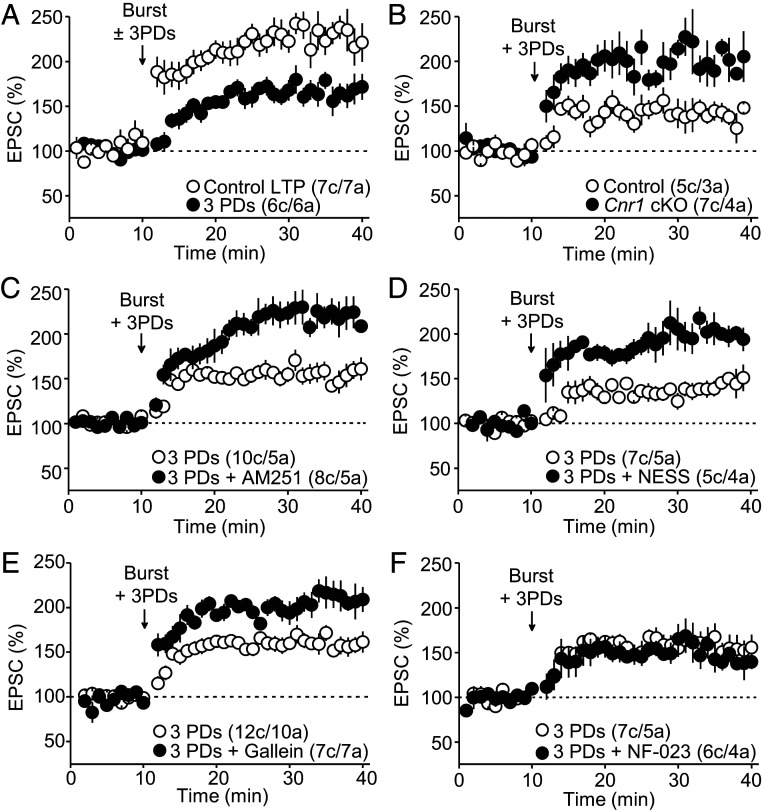Fig. 4.
Endocannabinoid release during LTP induction dampens MC-GC LTP. (A) Pairing burst-stimulation with three PDs significantly decreased MC-GC LTP magnitude (Control LTP: 233 ± 12% of baseline, n = 7; three PDs: 160 ± 12% of baseline, n = 6; Control LTP versus three PDs: P < 0.01, unpaired t test). (B) Delivering three PDs to GCs during induction dampened MC-GC LTP in Control but not in Cnr1 cKO mice (Control: 143 ± 10% of baseline, n = 5; Cnr1 cKO: 208 ± 13% of baseline, n = 7; Control versus Cnr1 cKO: P < 0.01, unpaired t test). Cnr1fl/fl mice were injected with AAV5.CamKII.mCherry (Control) or AAV5.CamKII.mCherry-Cre (Cnr1 cKO). (C) The dampening of MC-GC LTP was not observed when the CB1R inverse agonist AM251 (5 μM) was included in the bath (three PDs: 156 ± 9% of baseline, n = 10; three PDs + AM251: 220 ± 14% of baseline, n = 8; three PDs versus three PDs + AM251: P < 0.01, unpaired t test). (D) Bath application of the CB1R competitive antagonist NESS0327 (0.5 μM) also blocked the depolarization-mediated dampening of MC-GC LTP (three PDs: 135 ± 8% of baseline, n = 7; three PDs + NESS0327: 189 ± 10% of baseline, n = 5; three PDs versus three PDs + NESS0327: P < 0.01, unpaired t test). (E) Bath application of the βγ-subunit inhibitor gallein (75 μM) prevented the depolarization-induced dampening of LTP (three PDs: 155 ± 7% of baseline, n = 12; three PDs + Gallein: 206 ± 10% of baseline, n = 7; three PDs versus three PDs + Gallein: P < 0.001, unpaired t test). (F) The dampening of MC-GC LTP was still observed in the presence of the αi/o inhibitor NF-023 (10 μM) (three PDs: 161 ± 13% of baseline, n = 7; three PDs + NF-023: 153 ± 13% of baseline, n = 6; three PDs versus three PDs + NF-023: P = 0.6171, Mann–Whitney U test).

